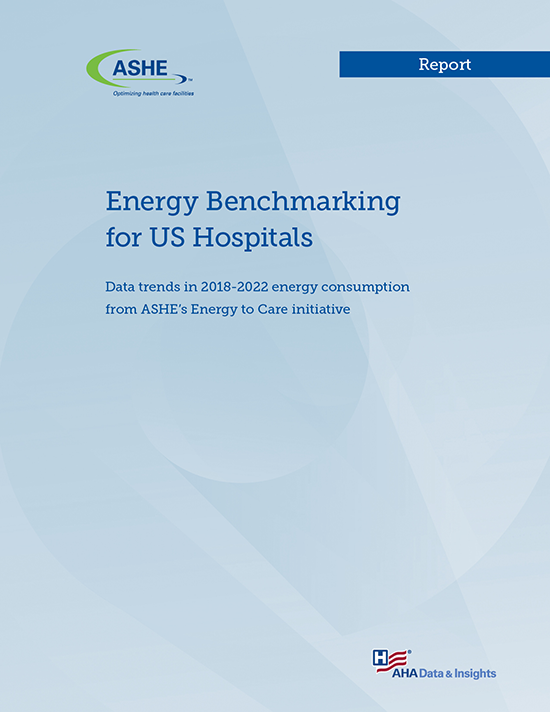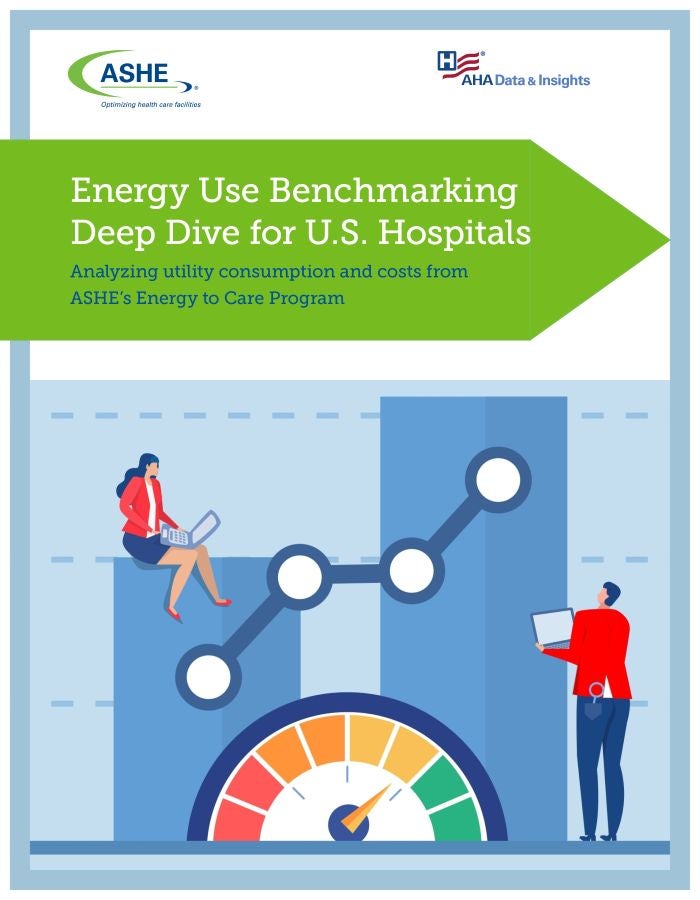
Energy Benchmarking for US Hospitals Resources
For health care facilities managers, engineers, designers, academics and other non-AHJ professionals. Learn how your health care facility’s energy use and energy reduction efforts compare to national benchmarks with this new report — utilizing data collected from hundreds of hospitals from around the country participating in ASHE’s Energy to Care Program. With this established baseline for energy use, outlined by hospital size and U.S. region in this report, hospitals can focus on strategies for reasonably reducing utility costs and optimizing performance.
Table of Contents Overview:
- Demographics and Methodology
- How Hospital Energy Consumption Has Changed Since 2018
- Hospital Energy Consumption Variations from Year to Year
- How Variations in Weather Affect Energy Consumption
- Median Source EUI by Climate Zone for 2023
- Typical Carbon Per Square Foot from Hospital Energy Consumption
- Typical Natural Gas Consumption
- Benchmarking Peak Electrical Demand (kW)
- How Much Energy Costs for Hospitals
- How Energy Costs in Hospitals Changed from 2022 to 2023
- How Electric Costs Compare to Natural Gas and Other Energy Sources
- Water Use by Hospitals
- Water Cost for Hospitals
- Despite Challenges, Hospital Facilities Are Reducing Energy Consumption
- Conclusions and Next Steps
Why isn’t this available in print? In support of our global sustainability and decarbonization initiatives, ASHE is reducing print offerings for certain publications. Questions may be directed to the ASHE team at ashe@aha.org.
Member: $74.00, Nonmember: $94.00
Energy Benchmarking for US Hospitals

For Authorities Having Jurisdiction. This report shares national benchmarks for health care facilities’ energy use and reduction efforts — utilizing data collected from hundreds of general medical and surgical hospitals from around the country between 2018 and 2022.
Energy data from ASHE’s Energy to Care program is analyzed and sorted by U.S. region, providing authorities having jurisdiction (AHJ) and regulatory entities metrics that can help them set energy use intensity (EUI) targets and energy reduction goals for health care facilities that improve efficiency, reduce operating costs and optimize performance.
Why isn’t this available in print? In support of our global sustainability and decarbonization initiatives, ASHE is reducing print offerings for certain publications. Questions may be directed to the ASHE team at ashe@aha.org.
Member: $74.00, Nonmember: $94.00


